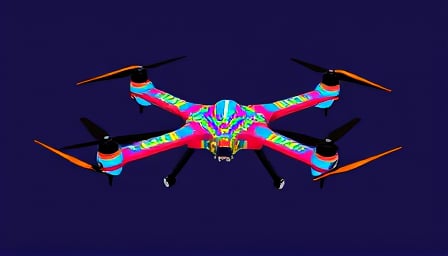Vertical Aerospace Ltd: A Soaring Ambition Amidst Market Skepticism
In the bustling industrial sector, Vertical Aerospace Ltd stands out as a beacon of innovation and ambition. Based in Bristol, this British company has carved a niche for itself by designing and constructing zero-carbon, electrically powered aircraft that take off and land vertically. As the world grapples with the urgent need for sustainable transportation solutions, Vertical Aerospace’s mission aligns perfectly with global environmental goals. However, despite its groundbreaking technology and noble mission, the company faces significant market skepticism, reflected in its financial metrics and stock performance.
Financial Turbulence in a Promising Sky
As of August 28, 2025, Vertical Aerospace’s stock closed at $5.148, a stark contrast to its 52-week high of $15.99 on December 26, 2024. This dramatic decline to a 52-week low of $2.76 on April 6, 2025, paints a picture of volatility and investor uncertainty. With a market capitalization of $489 million, the company’s financial health appears precarious, especially when considering its negative price-to-earnings ratio of -0.108. This metric, often a red flag for investors, suggests that the company is not currently profitable, raising questions about its financial sustainability and growth prospects.
Innovation vs. Profitability: A Critical Examination
Vertical Aerospace’s commitment to zero-carbon aviation is undeniably commendable. The company’s focus on electrically powered aircraft that can take off and land vertically represents a significant leap forward in reducing the aviation industry’s carbon footprint. However, the path from innovation to profitability is fraught with challenges. The negative price-to-earnings ratio underscores a critical issue: the company’s current inability to generate profits. This financial reality prompts a pressing question: Can Vertical Aerospace’s innovative solutions translate into economic viability?
Market Skepticism: A Reflection of Broader Challenges
The skepticism surrounding Vertical Aerospace is not unfounded. The aviation industry is notoriously capital-intensive, with high barriers to entry and significant regulatory hurdles. For a company like Vertical Aerospace, which is pioneering a new class of aircraft, these challenges are magnified. The market’s reaction, as evidenced by the company’s stock performance, reflects broader concerns about the feasibility of scaling such innovative solutions in a competitive and regulated industry.
Looking Ahead: Navigating Uncertainty with Innovation
Despite the financial turbulence and market skepticism, Vertical Aerospace’s vision for a sustainable future in aviation remains compelling. The company’s focus on zero-carbon aircraft is not just a technological innovation; it’s a necessary evolution in response to the global climate crisis. As Vertical Aerospace navigates the challenges of profitability and market acceptance, its success will depend on its ability to balance innovation with economic viability.
In conclusion, Vertical Aerospace Ltd stands at a critical juncture. The company’s pioneering technology offers a glimpse into a sustainable future for aviation, yet its financial metrics and market performance highlight the challenges of turning innovation into profitability. As the company moves forward, it will need to address these challenges head-on, proving that its ambitious vision can indeed take flight in the competitive skies of the industrial sector.
